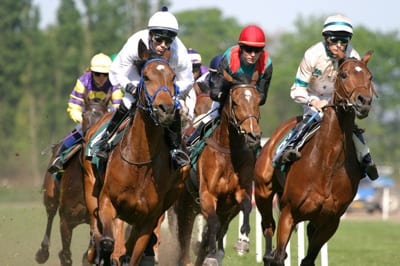 Those that enjoy horse racing will often find that they have a preference for one form of the racing over another. Some like the unpredictability of jump racing, knowing that at any moment even the best horses ever to have run in the sport can misjudge a fence, take a tumble and be out of the race entirely. Others prefer flat racing, where winning is pretty much entirely about the horse’s strength and speed and the judgement of the jockey. Neither discipline is necessarily any better or easier than the other, but they require different abilities from the participants.
Those that enjoy horse racing will often find that they have a preference for one form of the racing over another. Some like the unpredictability of jump racing, knowing that at any moment even the best horses ever to have run in the sport can misjudge a fence, take a tumble and be out of the race entirely. Others prefer flat racing, where winning is pretty much entirely about the horse’s strength and speed and the judgement of the jockey. Neither discipline is necessarily any better or easier than the other, but they require different abilities from the participants.
Yet what are the big differences between them? There are obvious answers to that question, with one requiring horses to jump over obstacles in order to reach the end of the course and the other one forgoing the jumps in favour of flat courses that allow the horses to gain some speed. There are more subtle differences between the two that you might not know about, though, including something as basic as the age of the horses that take part in the two different types of race. We’ll have a look at these differences here.
Jumps Racing Offers Multiple Disciplines
There are certain subtle differences in the world of flat racing that we’ll come on to look at, but they are nothing compared to the vast swathes of differences that you can come across in the world of jump racing. Historically known as National Hunt racing, the world of jump racing is typically split up into three different race types:
- Hurdles
- Steeplechases
- Bumpers
The first on that list is also the race type that is considered to be the easiest and the one that most jump racing horses start off doing. Hurdles are smaller, more malleable fences that will have a bit of give if a horse’s legs hit them. They are ideal for less experienced horses as they are more forgiving of mistakes.
Steeplechase fences are significantly tougher. They must be at least four foot six inches in height unless they’re on a water jump, which is a foot shorter than hurdles. They can also be either plain fences or ones with an open ditch, such as a water obstacle, either before or after the fence itself. Some are lower on the takeoff side than on the landing side, making them tricky for horses to negotiate.
Finally, and perhaps most interesting in terms of what we’re talk about here, are bumper races. These are also known as National Hunt flat races, which tells you all of the information that you need to know. They are races that are run on the flat but do so under National Hunt rules, marking them out from their flat racing equivalents. The ‘bumper’ name comes from the fact that they were originally for conditional and amateur jockeys, as well as inexperienced horses, so they would often ‘bump’ into one another.
The Seasons Differ
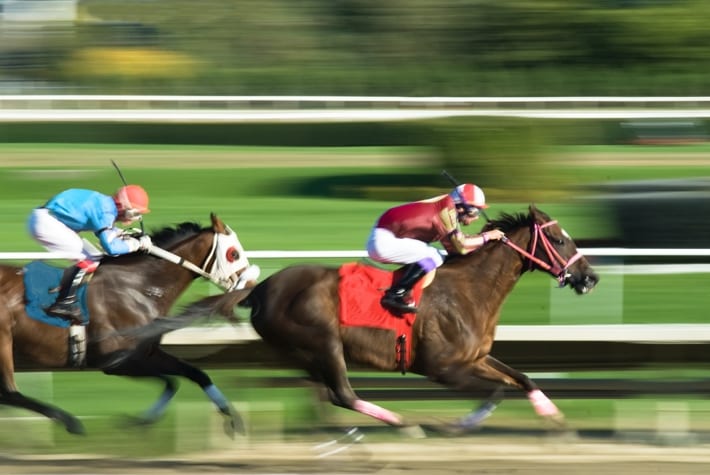
Whilst both types of racing tend to take place throughout the year nowadays, there is nominally a seasonal difference between the two of them. Flat racing is generally considered to be a summer sport, whilst jump racing is more common in the winter months. The reason for this is all to do with how the turf is during the different seasons.
It’s quite obvious when you think about it, but jump horses need to land on softer ground as much as possible, so jumping during the summer when the ground will be hard is likely to do horses some significant damage. Instead, the races tend to take place once the weather has started to turn and the rain has returned to English shores, meaning that the ground is softer and more pliable.
Flat racing, on the other hand, doesn’t involve horses having to hit the ground hard and can therefore take place on more firm ground. In fact, the firmer ground tends to allow the horses to run much faster because their hoofs aren’t being squished into the ground and dragged back out in quick succession. Flat racing is the only one of the two that can currently take place on artificial turf for that exact reason, because artificial ground is too firm for jumping horses to land on.
The Age of the Horses
Perhaps the biggest difference between the two disciplines is that flat racing is generally aimed at much younger horses. The minimum age for horses in the world of jump racing is three, with most of the successful horses being much older. A quick look at the Grand National, for example, will show you that the age of the last ten winners at the time of writing was as follows:
- 2010 – 10
- 2011 – 10
- 2012 – 11
- 2013 – 11
- 2014 – 11
- 2015 – 8
- 2016 – 9
- 2017 – 8
- 2018 – 8
- 2019 – 9
A quick look at the Classics of flat racing will show you a different picture, however. The 1,000 Guineas and the Epsom Oaks are both restricted to three-year-old fillies, whilst the 2,000 Guineas and the Epsom Derby are both for three-year-olds excluding geldings. You can see, therefore, the major difference when it comes to the maturity of the horses that run in each race type.
There are many reasons for this, with the primary one being that speed is the most important factor in flat racing and horses tend to peak in that sense at around the age of four. As they get older, horses get slower, but they also get stronger. This allows them to cope better with the physical demands that are put on them by jump racing.
That isn’t to say that flat racing thoroughbreds will move into the world of jump racing as they mature, of course. Most horses are bred with one or the other type of racing in mind, so they tend to stick with that form of racing until they reach a point at which they get put out to stud. It’s just that jump racing horses start their racing life when they’re older than flat racing horses and run until their much older, too.
Race Lengths
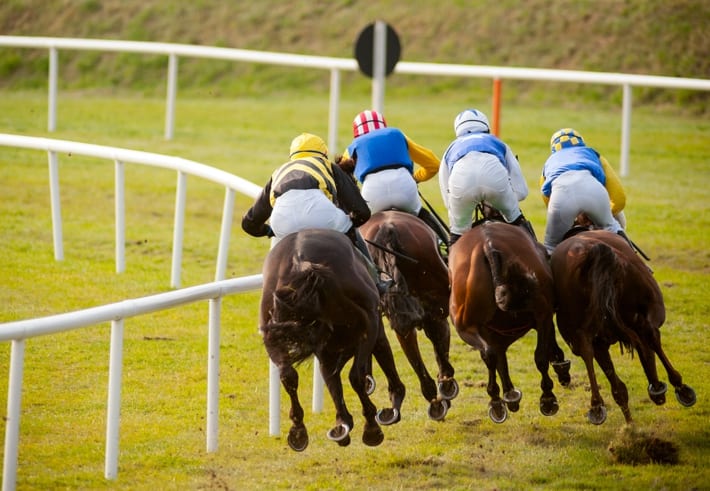
Flat racing, especially the more prestigious races, tend to take place on much shorter distances than jump racing. It’s not that there aren’t any long races in the world of flat racing, it’s just that the most thrilling races are often run over distances as short as five or six furlongs. The longest races in the world of flat racing tend to be about two miles and six furlongs in distance, though in truth very few of them are over the two mile mark.
Jump racing, on the other hand, is mostly run over much longer distances. The Grand National, as an example, is run over more than four miles. There aren’t all that many jump races that breach the three mile mark, with a race, such as the Cheltenham Gold Cup, peaking at three miles and two furlongs. Yet they simply need to be longer because there has to be room for the various jumps and obstacles to be put in that the horses need to negotiate during their route.
The Weight of Horses Differs Greatly
Given that the thrill of flat racing is all about the speed, it’s no major surprise to learn that the weight carried by the horses that compete in flat racing tends to be less than in the jump racing equivalents. The jockeys are often smaller and lighter, with the weight carried in terms of what goes into the saddle to make the numbers up ranging from around eight stone to ten stone in flat racing.
In jump racing, on the other hand, those races shift up about two stone, ranging from ten stone to twelve stone. In order to get an idea what we’re talking, let’s look at the weight information for two of the big races in each discipline, the Cheltenham Gold Cup and the 2,000 Guineas:
- Cheltenham Gold Cup: 5-year-olds carry 11 stone 8 pounds
- Cheltenham Gold Cup: 6-year-olds and over carry 11 stone 10 pounds
- 2,000 Guineas: 9 stone 0 pounds
It might not seem like an overwhelming difference, but a couple of stone can make all the difference in terms of speed. It’s why jump racing horses are generally much stronger that their flat racing equivalents, with the flat racing horses being bred to be wiry and fast rather than muscly.
How Races Start
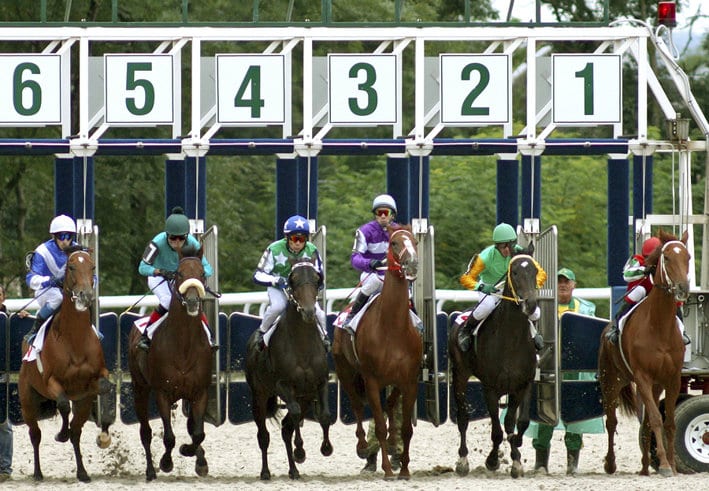
In terms of the visual spectacle alone, there is a huge difference in the way the two disciplines get races started. If you’re a more casual viewer, then you’d almost certainly have only seen races get underway by the participating horses all being corralled together towards the starting line-up, coming under Starters Orders and seeing the tape raised when they’ve been given permission to start their race.
It’s a method of starting that has led to some thrilling and even slightly embarrassing moments over the years, with the most obvious example coming in 1993 at Aintree during what was supposed to be 147th running of the Grand National. A false start was called but thirty of the thirty-nine runners didn’t know and completed the race, leading to it being declared void and earning the title of ‘the race that never was’.
Flat racing avoids such things happening by almost exclusively seeing the races started from within metal framed Starting Stalls that are covered in padding to offer the horses some protection. The truth is that the length of jump races combined with the obstacles horses contesting them need to negotiate mean that equal starts aren’t quite as important as they are in flat racing events. The Starting Stalls are fixed at some courses but at most they are motorised, allowing them to be moved along the course in order to shorten the length of the race.
The use of starting stalls leads to a conversation about draw bias, with some courses offering a slightly trickier run for horses that are in the higher numbered stalls. If you’re close to the rails on a racecourse, for example, then it will be easier for you cope with any turns on a course. If you’re further away then you’ll have to run slightly further than horses on the inside. Equally, some courses have draining that runs towards the rails, meaning that if it’s been raining then the horses on the inside will have tougher going than those on the outside. How races start can make all the difference.
Flat Racing Is Richer
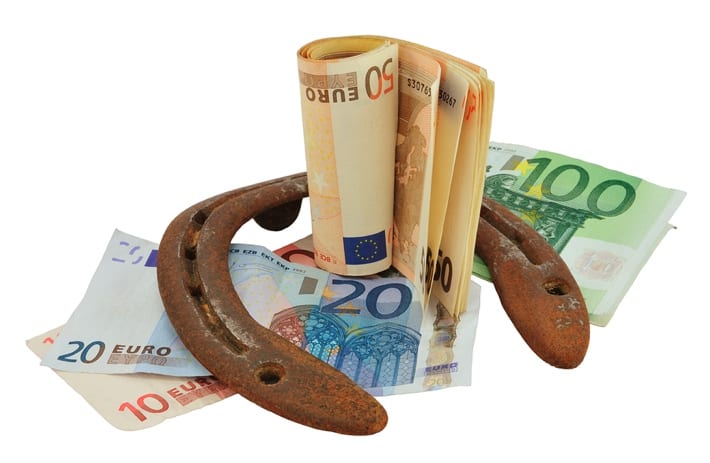
Whilst there is plenty of money in both types of racing when you’re looking at the most prestigious races, there is more money in flat racing in general. As an example, here’s a look at the list of the world’s richest races:
- Pegasus World Cup
- Dubai World Cup
- The Everest
- Breeders’ Cup Classic
- Prix de l’Arc de Triomphe
They are all flat races, giving you some indication of how they are richer races all round. Indeed, there is more money in flat racing in general. The winner of one of Britain’s Classics can be bred for significant amounts of money compared to jump racing horses when put out to stud.